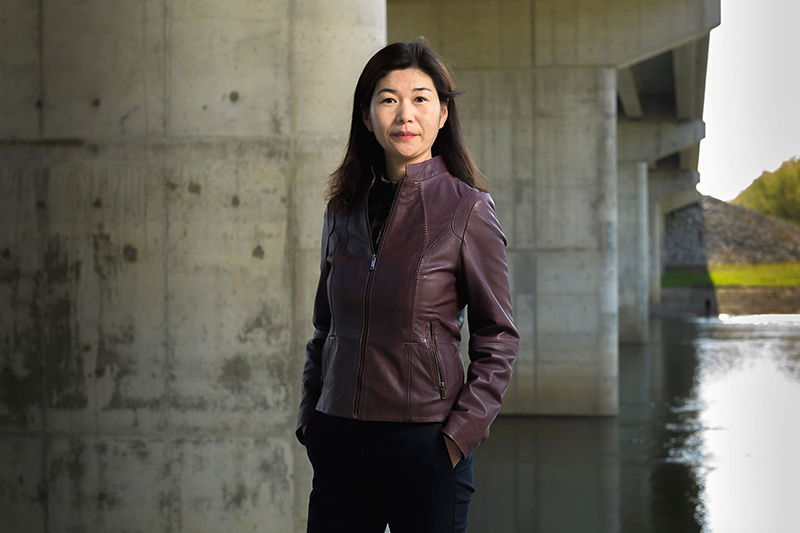
Luna Lu is investigating unique ways to build artificial intelligence into concrete-paved bridges and highways, enabling them to prevent and repair their own damage. (Purdue University photo/John Underwood)
WEST LAFAYETTE, Ind. — Constant construction on your vacation route, jarring potholes during the winter and bridge collapses will continue until roads are "smart enough" to better prevent their own damage, says a Purdue University civil engineer.
This wouldn't mean making roads look like the flashy, computerized highways you see in science fiction movies depicting the future. In fact, roads might look exactly the same. But the materials the roads are made of would have the ability to digitally communicate through technology embedded beneath the surface or repair themselves.
"Our roads won't get safer if we continue fixing potholes or building infrastructure as we have been building it. We need to think about how to incorporate a digital transformation," says Luna Lu, a professor in Purdue's Lyles School of Civil Engineering, who is an expert in innovating concrete to improve roads.
Lu directs the Center for Intelligent Infrastructure at Purdue. She gives three reasons why roads need a digital facelift:
- Roads that "talk" might cut down on construction – and traffic. Lu has developed sensors that can more accurately "tell" engineers when freshly paved concrete is ready to take on heavy traffic, reducing the likelihood of the concrete developing cracks and needing to be repaired again. Fewer repairs throughout the year would mean fewer traffic slowdowns due to construction. "We don't need to completely rebuild existing infrastructure to make it smarter. Implementing sensors is low-hanging fruit," Lu says.
- Smarter roads could be better for the environment. The process of producing one ton of cement can generate up to one ton of carbon dioxide. Less road repair would reduce cement production. Lu and her collaborators are working on materials that would reduce the amount of carbon dioxide generated in the production of cement. Lu's lab also is developing a way that concrete could heal its own cracks.
- We'll be using roads differently in the future. Population growth patterns change over time, affecting the flow of traffic. Electric and autonomous vehicles would also change the layout of roads and how they are used. "Infrastructure shapes us, and we shape infrastructure," Lu says. "When a lot of our roads were first built in the U.S., we didn't have tools that could collect data and inform decisions. Now we do have those tools. We need policies and regulation that are more adaptive to human needs."






